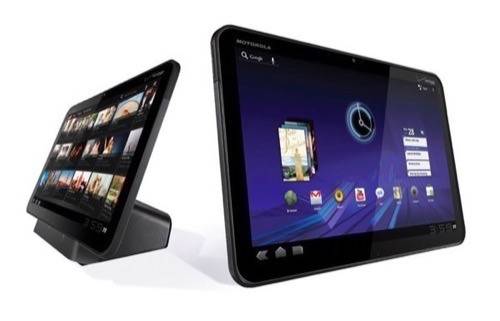It is interesting to look through all the material that Amazon has released for its announcement of the new Kindle Fire tablet. From the announcement of the new family of Kindles, to the product page on Amazon.com to the press release for the new cloud-based browser Silk, the word Android is not mentioned once.

The Kindle Fire is a tablet, built off Android. Amazon developers forked Android somewhere along the way, probably from either the Frozen Yogurt 2.2 or Gingerbread 2.3.4 so really, this is actually a tablet built off a smartphone OS and not the official Android tablet OS, Honeycomb. Yet, Amazon is about to blow the rest of the Android tablet ecosystem out of the water.
The Difference Between the Kindle Fire and Other Android Tablets
What does Amazon have that Motorola, HTC, Samsung, LG, Huawei do not?
In a word … everything.
See our main news for the feature list of what the new Kindle Fire will bring. Media, retail, music, books, video. It is like Facebook’s “Read, Watch, Listen” embodied in a device you can actually hold, without the open social graph API tied to it. The Kindle Fire is not just about premium Android apps (more on that below) but a full-fledged media device a la Apple’s iPad. Really, no other Android tablet can integrate that same experience and that is why the tech media has been excited about this thing since Amazon CEO Jeff Bezos hinted at it in May.
The first large Android tablet was the 7-inch Samsung Galaxy Tab. It was built off of Android 2.2 and essentially was a large Samsung Galaxy S. The first real Android tablet based off of the tablet OS was the Motorola Xoom built off of Android 3.0. In the almost eight months that the Xoom has been on the market, it has been a basic flop. There are a variety of other Android tablets on the market right now, based both on Honeycomb and the various smartphone derivations such as the Samsung Galaxy 10.1 and 8.9 (Honeycomb) and the HTC Flyer and Evo 3D View (Gingerbread).

The Kindle Fire is everything that the Motorola Xoom is not
What exactly is the Kindle Fire? It is not like the 7-inch Galaxy Tab that is basically a large smartphone. Nor is it a Xoom-like large tablet (though there are rumors that a 10-inch Kindle Fire may come out next year). Basically, this comes down to a simple question: what Android apps will the Kindle Fire actually run?

It Boils Down to Apps
The answer: will be smartphone applications chosen specifically by Amazon to be optimized to the 7-inch screen that are compatible back to Android 2.2. There is no word yet though on how Amazon will upgrade its build of Android. A big part of Ice Cream Sandwich will be backward and forward compatibility of Honeycomb and smartphone apps. Will Amazon upgrade to Ice Cream Sandwich when it is available or will they stick with the smartphon build. How will Amazon handle OS upgrades in general?
This comes down to the fundamental nature of what Kindle Fire actually is. It is a fork of Android yet built on top of Android. How does that make it any different from the skins that the OEMs build on top of Android like HTC does with Sense? Like HTC, Amazon did not fundamentally change Android. They built on top of it and by doing so created something entirely new that is laser-focused on Amazon’s services.
You may notice a theme here. There are a lot of questions that do not have answers except in the halls of Amazon’s development center. We have contacted Amazon for an explanation of how they built out Android for the Kindle Fire. We are hopeful that they will get back to us but to be honest, they almost never do when it come to issues like these.

















